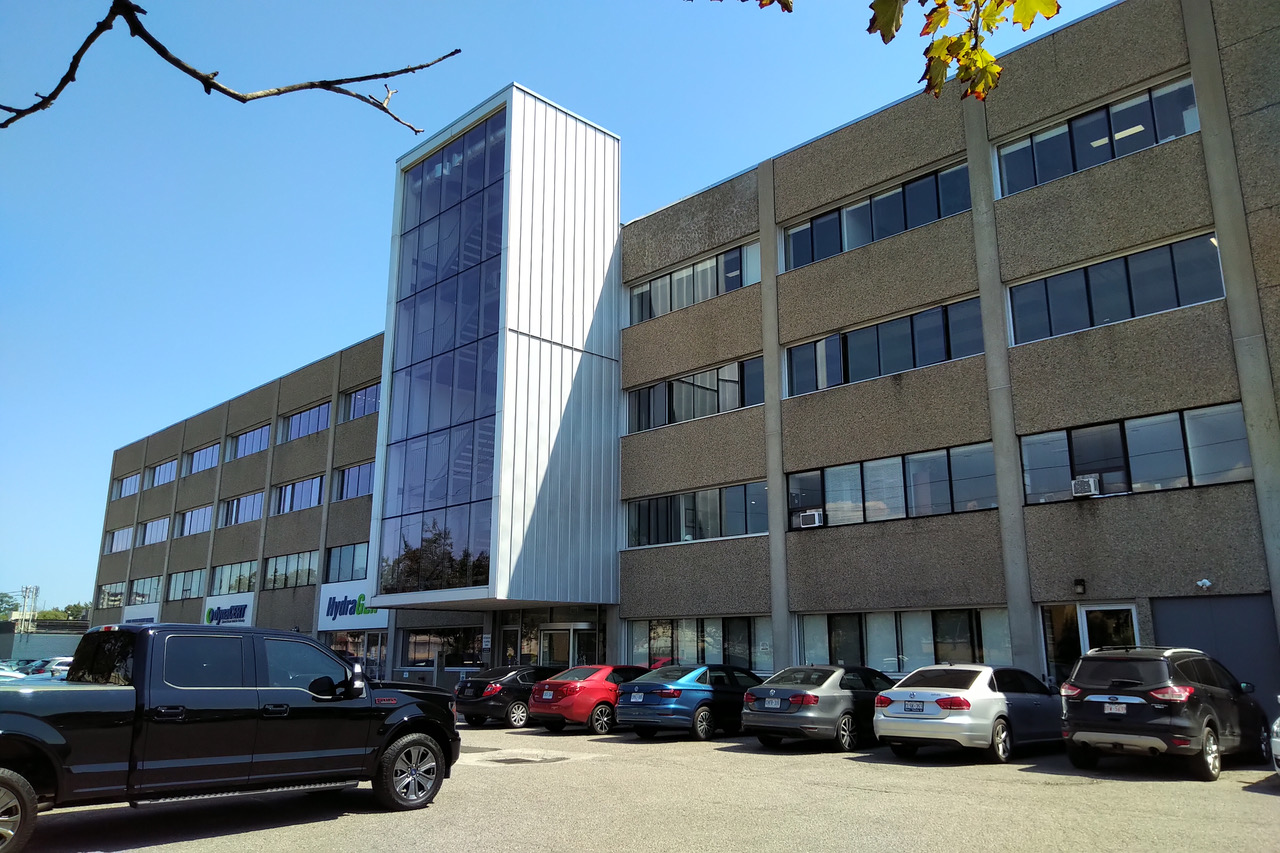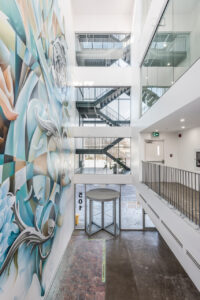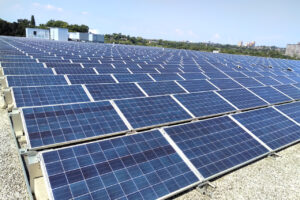

His mantra has been tweaked ever so slightly over the years, but Elliot Strashin’s ultimate goals and aspirations make even more sense today than ever before.
Nowhere is that more evident than in the ongoing progress at 501 Alliance, the Toronto project managed by Strashin Developments, which is undergoing continuous renovation and targeting LEED platinum certification.
“I continue to stand by my belief that the greenest building is the one that already exists,” says Strashin, President of Strashin Developments. “What I find even more true today than ever before, however, is that for sustainability or green technology to gain any traction, it must also make financial sense. Otherwise, people will rationalize that they can’t adopt it right now and nothing will happen.”

Changing with the times, on any level, means adapting and refining the status quo, something Strashin Developments has done continually … with stellar results.
“Since we started out with 501 Alliance back in 2012, greenhouse gas emissions have only gotten worse,” he says. “Now we face rising interest rates and a possible recession. And Covid has certainly changed the nature of work in the office”.
“But these facts of life only highlight our goals of sustainable, green buildings which reduce carbon emissions and make financial sense. I save money with the changes I have adopted, as well as reduce carbon emissions.”
This project, through its wholly-owned subsidiary 501 Alliance Investments Inc., is taking place at the former Cooper Canada sporting goods factory, near Weston Road and Black Creek. The original building was built in two stages, a one-storey section in 1965 and a four-storey section with full underground parking in 1975.

The building is geographically located in the heart of the city, with access to the St. Clair dedicated streetcar, the Eglinton LRT, the Smart Track, GO Transit, plus buses and major highways near Weston Road and Black Creek.
The Strashin project at the 380,000-square-foot facility involves gutting and renovating throughout. It is 2/3 renovated and tenanted to date but is expected to be finished within three years, Strashin says.
Some of the changes included in the renovation include:
How is the project taking aim at LEED platinum certification? Strashin says there are a number of initiatives, including stormwater harvesting, geothermal HVAC, passive heating and cooling of the make-up air, high-efficiency LED lighting and insulated roofing and walls.

The 298KW solar farm is part of the feed-in tariff (FIT) program undertaken by the previous Liberal provincial government in Ontario.
“The other additions we include make a significant difference, yet they don’t cost much more than a regular renovation,” Strashin explains.
As with any project, occasionally developers have to deal with unforeseen stumbling blocks. In the case of 501 Alliance, Strashin says they were confronted with the fact that the site is located on a floodplain, and work has been affected by three separate once-in-a-hundred-year floods. They persevered, however, flood-proofed the building and continue to follow a sustainable path, despite the obstacles.
With excellent support from like-minded sustainability experts, Strashin has evolved and forged ahead. For example, one of the existing 501 Alliance tenants, Dennis Campbell, of Polar Bear Water Source Heat Pumps Mfg. Inc., interested Strashin with his geothermal technology ideas, so much so that he incorporated geothermal into the building.

“Geothermal HVAC, with heat pumps operating off ground or lake loops, make the most sense in reducing greenhouse emissions for buildings,” says Strashin, who has now partnered with Dennis and Roman Dychka in Green Systems Group Inc., the successor of Polar Bear. The new company has about 6 projects on the go including an apartment building, a school and some smaller residential and commercial installations
“It’s true that there is incredible demand for geothermal today, what we refer to as ground-source heat pumps. Actually, what other viable choices are there? Ground-source heat pumps work anywhere, no matter the conditions or weather. Compare that to air-source heat pumps that really don’t work well in extreme temperatures.
“Sure, there are drilling costs up front, but depending on your source of heating and AC the payback can be as little as seven years, which is the case for 501.”
At the end of the day, Strashin firmly believes that no matter what materials you use, no matter how carbon neutral you attempt to be, you can never surpass the savings in carbon emissions generated by re-using and repurposing an existing building such as 501 Alliance.
“Again, I target my construction projects to be green because it makes economic sense,” says Strashin. “Green technologies and sustainable development will only become mainstream if it also makes economic sense. Everything we do is carefully engineered by our consultants and researched beforehand, to confirm the savings.”